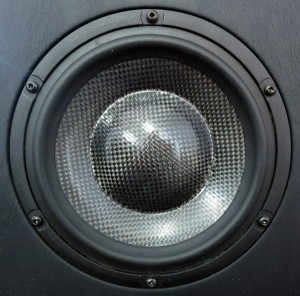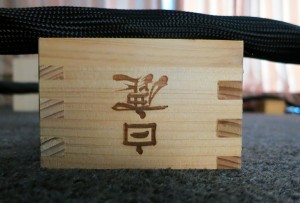 Back in the good old days of 2007, I tagged along with Gary Pearce when he reviewed Image Loudspeakers’ top of the range Paragon floorstanders for a local tech mag. He described them as “world-class speakers” and I totally agreed with him. From the finish to the sound, the big Paragons did the job in a way that made me think that they were somewhat under priced, especially in an overseas context.
Back in the good old days of 2007, I tagged along with Gary Pearce when he reviewed Image Loudspeakers’ top of the range Paragon floorstanders for a local tech mag. He described them as “world-class speakers” and I totally agreed with him. From the finish to the sound, the big Paragons did the job in a way that made me think that they were somewhat under priced, especially in an overseas context.
So when Chris Ball (Mr. Image Loudspeakers) got in touch to let me know that he had a revised version of the Paragons to show off, I knew that this would be a worthwhile and interesting session. Like the first Paragons, the new models were set up at Mark Erceg’s Gulf Harbour listening room, in the distant reaches of Auckland’s North Shore. Mark runs Audionut, and he imports some highly desirable hi-fi brands including Reference 3A, MBL, E.A.R and Kuzma among others. Audionut is currently the only hi-fi vendor able to sell Image’s flagship speaker because Mark knows them inside and out and can demo them to their full potential. That potential, as it turns out, is high.
The story behind the second generation of the Paragon starts with a new Morel speaker driver. Chris used Morel’s latest carbon fibre bass/midrange driver in the recent Petite Performa speaker. It was so good that he decided to implement this new driver range in the Revelation and Paragon models.
 The $13,000 Paragons are large floorstanders measuring 113 x 26 x 48 cm (H x W x D) that at a glance look much like the first model. There’s the same dual cabinet design with two 8” Peerless woofers housed in a rectangular ported cabinet. Isolated from the bass cabinet is a shaped and angled sealed upper cabinet containing the new Morel midrange and a Morel Supreme 110 tweeter. This isolated cabinet design allows the drivers to be time-aligned and it keeps the bass drivers from interfering in any way with the critical upper frequency transducers. The side panels are now slabs of thick glass instead of custom wood; this glass is scratch resistant, anti-resonant and adds a hefty 12.5 kilograms per side, taking the speakers to a total weight of well over 50 kilograms each.
The $13,000 Paragons are large floorstanders measuring 113 x 26 x 48 cm (H x W x D) that at a glance look much like the first model. There’s the same dual cabinet design with two 8” Peerless woofers housed in a rectangular ported cabinet. Isolated from the bass cabinet is a shaped and angled sealed upper cabinet containing the new Morel midrange and a Morel Supreme 110 tweeter. This isolated cabinet design allows the drivers to be time-aligned and it keeps the bass drivers from interfering in any way with the critical upper frequency transducers. The side panels are now slabs of thick glass instead of custom wood; this glass is scratch resistant, anti-resonant and adds a hefty 12.5 kilograms per side, taking the speakers to a total weight of well over 50 kilograms each.
The Paragons are solidly built to say the least, with 38mm front baffles and 30mm thick walls constructed using laminates and dissimilar materials. The interior of the cabinets is also heavily braced, which when combined with the glass panels and the overall design, takes resonances down to the lowest levels Chris has yet achieved.
The finish is superb from top to bottom and front to back, even when examined with a critical eye actively looking for glitches. The leather covered front baffles and the subtle green shading from the front of each glass panel add a touch of class and luxury that elevates the design. The leather also improves the diffraction characteristics. The speakers boast Image’s Accu-Bases and hand-turned adjustable solid brass floor spikes, while the cable terminals are gold plated WBT units in a bi-wire configuration housed on an anodised alloy plate.

In short, these speakers are stunners, especially with the magnetically attached grilles removed and the drivers on show, most notably that impressive Morel SCM634 carbon fibre mid, which is so new that it’s only used by a handful of high-end speaker manufacturers. It’s similar to the bass/mid used in the Petite Performa but it’s a pure midrange, so doesn’t suffer any of the inherent compromises of a driver that needs to reach down into the lower octaves while also handling the vitally important midrange frequencies.
This high-tech driver is made up by layering carbon fibre on either side of a Rohacell layer (a material used to make helicopter blades) – this results in an ultra-stiff cone that’s also self damped. Its roll-off and response characteristics allow Chris to utilise a simple crossover network, which reduces any adverse effects to the bare minimum. This is the top of the range in midrange drivers from Morel and according to Chris, it’s so accurate and revealing that getting the new Paragons ready to go has been the toughest experience he’s had in four decades of speaker manufacturing. Even the tiniest changes in design, materials or component selection made big differences in the sonics, which necessitated a seemingly endless sequence of adjustments and comparative listening sessions before he was willing to show the speakers off to press and public alike.
Listening
The Paragons measure up as being 90dB efficient, so they’ll run reasonably well on only twenty watts of valve amplification but they need some power to really rock at high levels if that’s what the owner wants. On the day, they were driven by $17,000 of MBL 8011s dual-mono solid state power amp, which produces a sturdy 210 watts into an eight ohm load and much more into the four ohm load of the Paragons. The preamplifier was one of Tim de Paravicini’s lovely E.A.R 868 valve units, which is priced at $8,500.
 The source was Mark’s backup player, an Audiomeca Obsession II, which is a discontinued model but given that it was priced at approximately $5,000 when new, is still a player to be taken seriously. That said, he did indicate that the source was the weak link in the system. Cable duties were handled by Kubala-Sosna Expression interconnects at around $1,350 per meter and Kubala-Sosna Fascination speaker cables (single wired with jumpers) priced at $1,500 per meter. The speaker cables were lifted off the floor by what I initially took for some ultra-exotic handmade cable supports but these turned out to be nothing more than the boxes from Sake cups – a functional and lovely choice.
The source was Mark’s backup player, an Audiomeca Obsession II, which is a discontinued model but given that it was priced at approximately $5,000 when new, is still a player to be taken seriously. That said, he did indicate that the source was the weak link in the system. Cable duties were handled by Kubala-Sosna Expression interconnects at around $1,350 per meter and Kubala-Sosna Fascination speaker cables (single wired with jumpers) priced at $1,500 per meter. The speaker cables were lifted off the floor by what I initially took for some ultra-exotic handmade cable supports but these turned out to be nothing more than the boxes from Sake cups – a functional and lovely choice.

We (Gary Steel and myself) only had a couple of hours with this system and the speakers, so this can’t be considered a full review, rather it’s an overview. It’s not realistic to investigate every aspect of any component’s sonic characteristics in a short session but it is possible to make some valid judgements as to its abilities. We played a wide variety of music and strangely enough, only one of Steel’s music choices sounded like a tuning signal originally used by the British Air Force to set up radar units in 1941.
The first thing that stands out about the sound of the Paragons is the openness and accuracy of the midrange. That driver is something special – I’ve heard the Petite Performa, along with its MASS module and it displays the same characteristics through the midrange but the Paragons take that and run with it. There’s a difference between a sound that’s detailed and one that’s genuinely revealing. When you’re listening to a drum kit and you’re able to clearly distinguish the strike of the stick on the drum skin as a separate musical event to the sound the drum actually generates from that strike, then you’re lucky enough to be in front of a high-end loudspeaker (or inside a set of good headphones). The Paragons do this trick seemingly without effort. (continued on page 2……)















